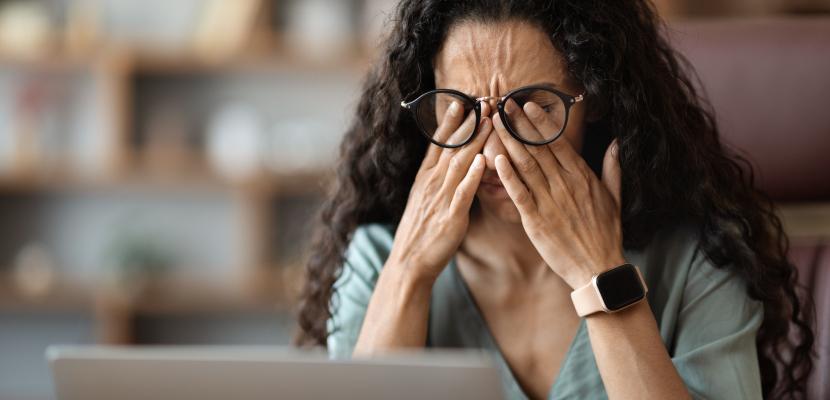
Once considered an affliction of ageing, doctors are reporting dry eye disease in much younger patients.
And the most likely culprit is hiding in plain sight – screen time.
With phones, tablets, laptop and desktop screens dominating our days it’s easy to find ourselves staring into the online void for many hours at a time.
Research shows that once we hit three hours of screen time, dry eye symptoms spike, causing irritation, itching, inflammation and redness.
It’s how screens alter our behaviour that seems to cause the problem – we blink less when watching or concentrating on a screen, and the position of the screen can mean our eyes don’t fully close when we blink.
This seems like a subtle change, but the number of times we blink in an hour and how completely we blink can really affect our eyes.
Dry eye disease has largely been associated with ageing, when the glands that produce tears and oils naturally decline.
But optometrists and GPs are flagging more cases in adolescents and young adults, and they are getting younger every year.
This condition is more than just a nuisance. Untreated dry eye can cause chronic discomfort, scarring of the cornea, and even permanent vision damage.
What is dry eye disease?
There are two components to tears – the watery bit produced by the glands around our eyes and a layer of oil over the surface of the eye which reduces the evaporation of the watery bit.
People who are dehydrated don’t produce the same amount of tears, and their tears contain more salt, which can be irritating to the eye.
The oil layer and the health of the cornea – the surface of the eye – can be impacted by lack of the right oils, vitamins and nutrients, which makes diet and lifestyle factors vital for good eye health.
There’s strong evidence a Mediterranean-style diet, rich in vegetables, healthy fats and anti-inflammatory foods, helps protect against dry eye.
The good news is that, if caught early, dry eye disease is often reversible.
But prevention is far better than years of artificial tears, medications and eye checks.
Protecting eye health from childhood onwards is an investment in long-term vision.
Tips to protect your eyes from screen-related dry eye
- Follow the 20-20-20 rule: every 20 minutes, look at something 20 feet (10 metres) away for 20 seconds.
- Stay hydrated to support healthy tear production.
- Eat a Mediterranean-style diet rich in leafy greens, fish, olive oil and nuts.
- Limit processed and fried foods that disrupt the eye’s protective oil layer.
- Consciously blink more often when using screens.
- Use artificial tears if recommended, but don’t self-diagnose – see an optometrist or GP for persistent symptoms.
The eyes may be the windows to the soul, but they are also fragile.
If we want to avoid a generation growing up with preventable vision problems, it’s time to take the cost of screen time seriously.
Dr Kieran Le Plastrier is a GP and Assistant Professor of General Practice